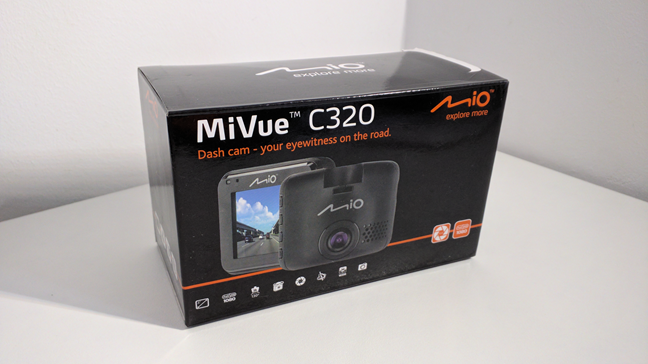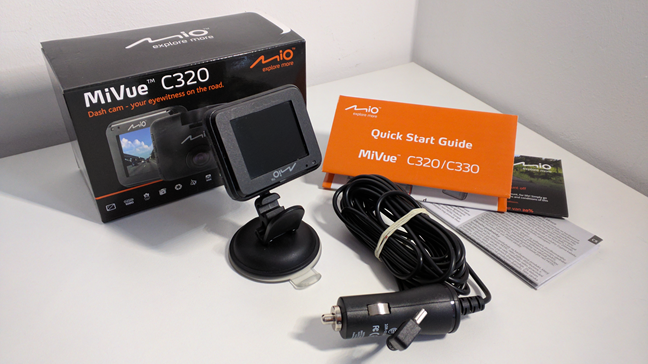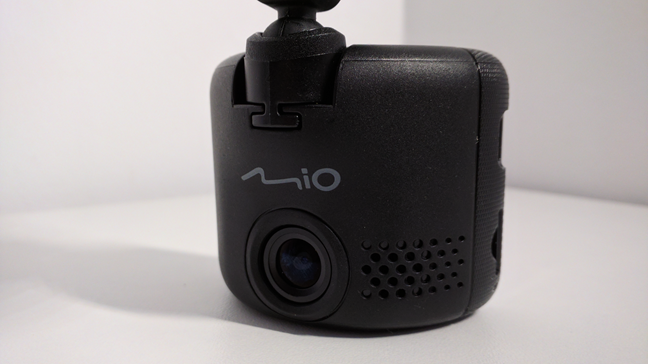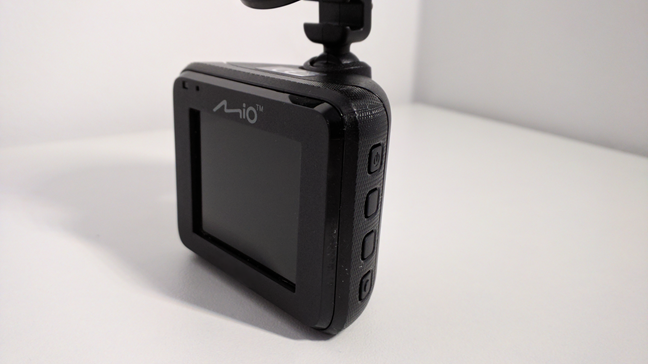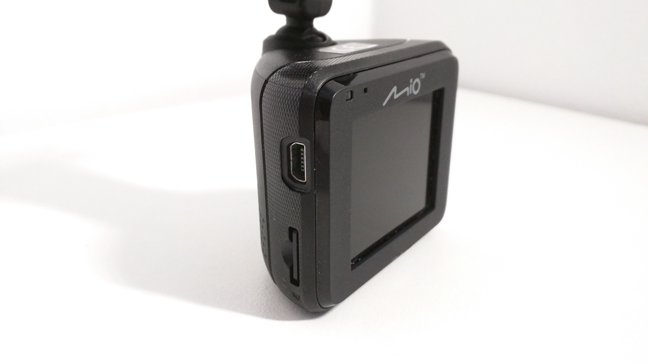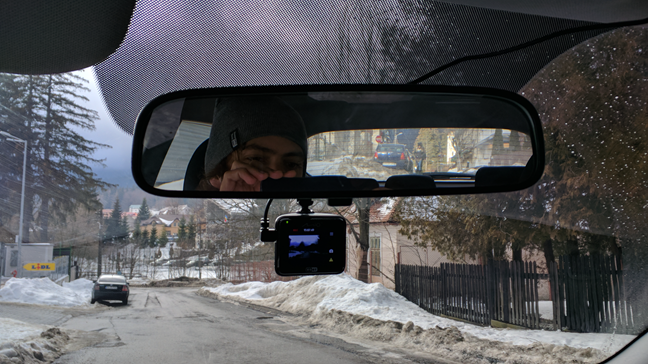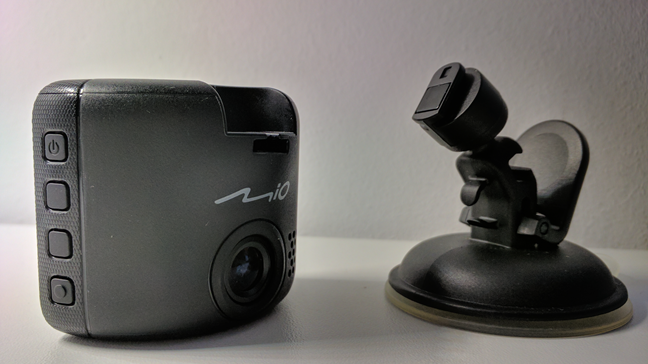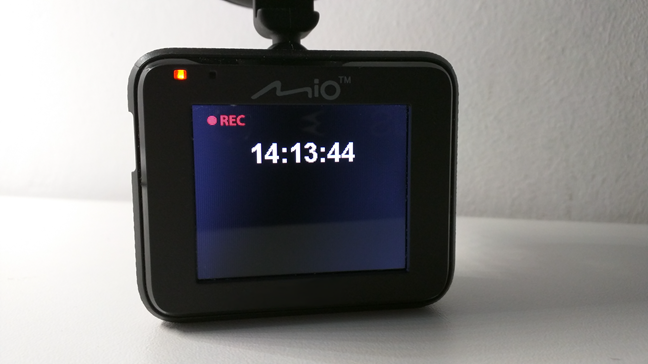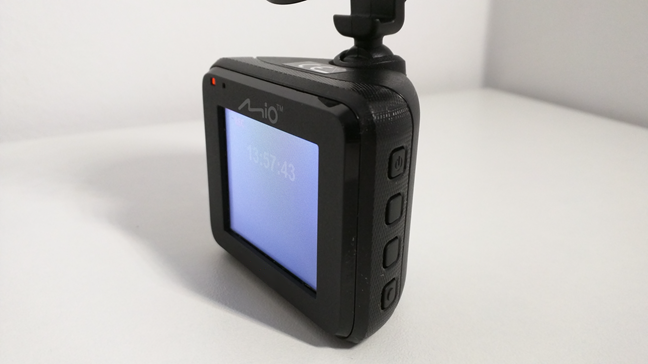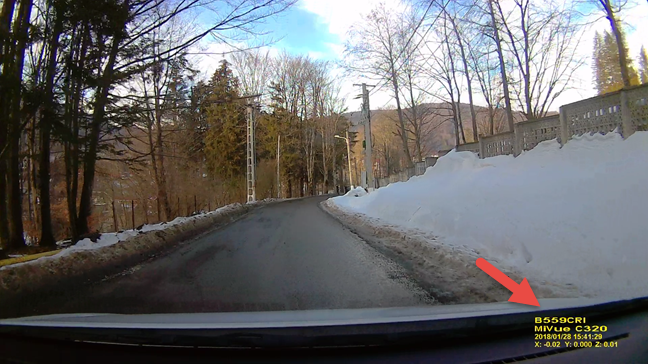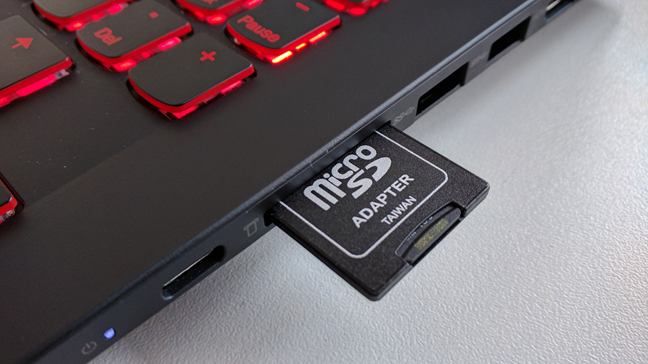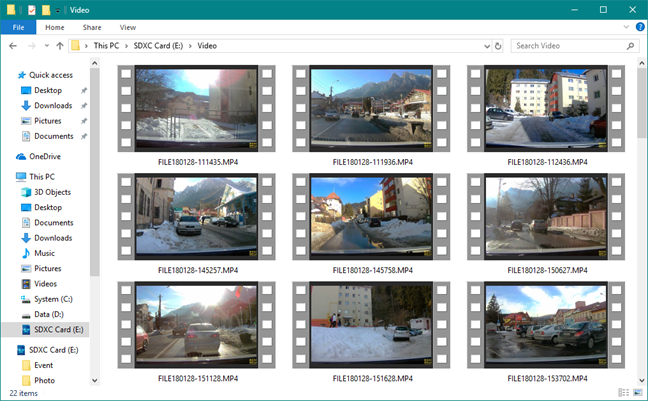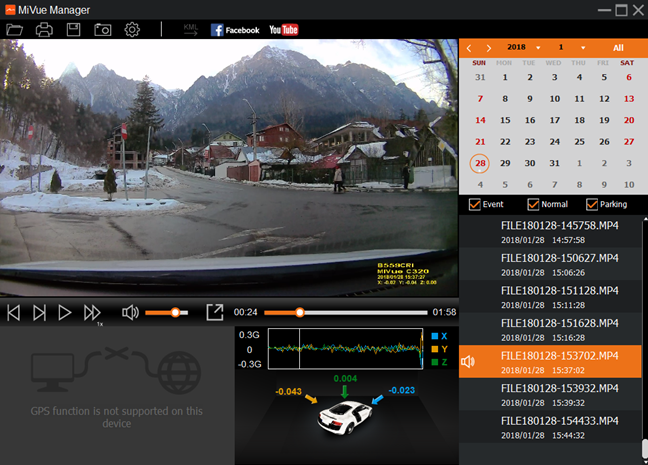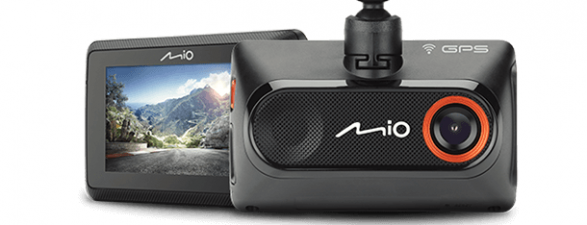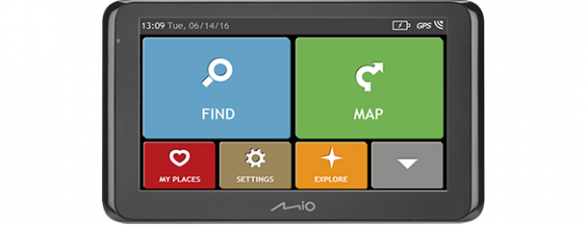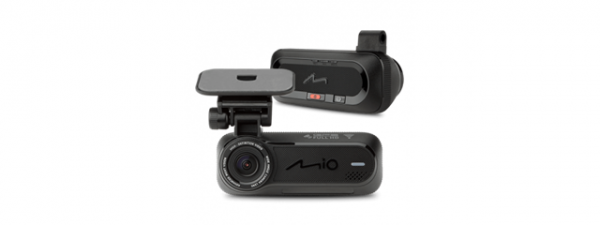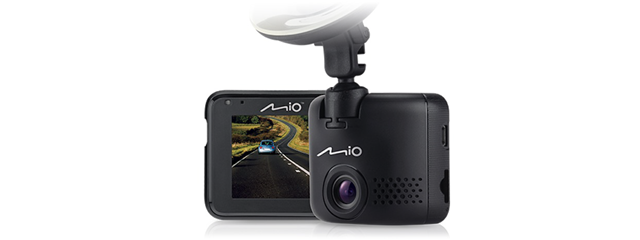
Not too long ago, we have had the chance to test the MIO MiVue C320, a dash cam that has a few great features. For starters, this dash cam has an entry-level price tag, can record road videos while you are driving, at a high resolution of 1080p Full HD. Also, it has a built-in G-sensor that can identify the direction from which your car was hit, if you have the misfortune to be part of a car accident. We have used this small dash cam for a few weeks now, and here are our impressions of it, in this review:
MIO MiVue C320: Who is it good for?
The MIO MiVue C320 dash cam is a suitable choice for people:
- Who need to record high-quality videos, in 1080p Full HD resolution, while driving
- Who want a small dash cam that does not obstruct the driver's view of the road
- Who desire a dash cam at an entry-level price tag
Pros and cons
There are more than a few good things to say about the MIO MiVue C320:
- It records videos in 1080p Full HD resolution, while on the road
- It has a low price, one which most drivers can afford
- It is small, and its mount holds the cam from its top, so you can place it on your windshield, near your rear mirror, where it does not obstruct your view on the road
- Its charging cable is long enough to let you run it on the inner car roof and the car pillar from the right side of the windshield
- It has a built-in G-sensor which records the direction from which your car is hit in an accident, and can also start an automatic video recording of such an event
As for negatives, the MIO MiVue C320:
- Is made of plastic, and some people might not like that, although the plastic used is of good quality
- It does not bundle advanced features, such as a GPS module or a speed camera detection feature

Verdict
We like the MIO MiVue C320 dash cam, and we believe that it is a useful device for any driver who wants to have a record of the roads he or she drove on. Unexpected things can happen at any time, and having a record is always a good idea, especially if you are involved in an accident that is not your fault. The MIO MiVue C320 can deliver all the basics you need, with excellent image quality. There are no fancy details on this dash cam, except maybe its built-in G-sensor, but that is a positive if you want a device that is easy to use, which produces good results, and which does not cost a lot of money. If you are looking for a good budget solution, you should consider buying the MIO MiVue C320.
Unboxing the MIO MiVue C320 dash cam
The MIO MiVue C320 dash cam arrives in a good looking package. We are talking about a glossy box made from black cardboard, with plenty of images and text printed on it. On the front of the box, you can see two overlapped pictures that show the dash cam from its front and rear sides, but also some small icons that describe its main features.
On the sides of the box, there is information about the package contents, and on the back, there are details of the main specifications of the dash cam, in multiple languages. Inside the box, you find the MIO MiVue C320 dash cam itself, a suction mount, a car lighter power charger, the user manual, and the warranty documents.
The MIO MiVue C320 arrives in good looking packaging and has all the accessories you need for using it.
Hardware specifications
The MIO MiVue C320 dash cam is a small device: its height is 2.01 inches or 51.2mm, its width is 2.46 in or 62.6 mm, and its depth is 1.47 in or 37.4 mm. It is also a light device, with a weight of 2.04 ounces or 58 grams. You can place it on your windshield with the help of an average size suction cup, and it connects to the car's cigarette lighter port via a long mini USB cable with a length of about 11,5 feet or 350 centimeters.
MIO MiVue C320 may be small and light, but it is also powerful when it comes to hardware. It can record video in 1080p Full HD resolution, at 30 frames per second, using H.264 video compression technology. This means that it should provide good image quality as well as small file size. The camera records video with 130 degrees view angle so that it can cover all the road ahead of you, without leaving any blind spots. To be able to record brighter and clearer videos, but also to do a better job in low light conditions, the dash cam is equipped with F2.0 glass lens.
On the back of the dash cam, there is a 2 inch non-touch LCD screen, which lets you watch the video that is recorded, as well as configure the various settings available. To go through the menus, to start recording or to power on the dash cam, you have to use the four physical buttons found on the right side of the screen.
The MIO MiVue C320 dash cam stores the recorded videos on a micro SD card which you have to insert in its dedicated slot on the left side of the device. According to the dash cam user manual, it offers support for Class 10 memory cards with 8 GB - 128 GB capacity.
The only fancy feature offered by the MIO MiVue C320 dash cam is a 3-axis G-sensor, which can detect sudden motion, such as when you are in a car crash. When such a thing takes place, the sensor activates and, besides the emergency video recording, the dash cam also records the direction from which your car was hit.
MIO MiVue C320 looks like an entry-level dash cam that refuses to make compromises regarding video recording quality. The lenses appear to be above average, and the Full HD recording resolution is good enough for many drivers.
Using the MIO MiVue C320 dash cam while driving
The impression we had when we took the MIO MiVue C320 dash cam out of its box was that we were looking at a good quality piece of technology. Although it is made entirely out of plastic materials, the dash cam feels sturdy and robust. Some people might argue that the plastic is a cheap material and that a great device of this type must have a metal case. That may be true in many cases, sure, but in the case of dash cams, we tend to prefer plastics, for the sole reason that they do not break if you forget them on your windshield in a hot summer day.
MIO MiVue C320 is a small device, and that is a positive because it does not obstruct the driver's view. Another reason is the fact that, because the mount holds the dash cam from its top side, you feel obliged to place it to the upper area of the windshield, maybe somewhere close by the rearview mirror. This is a good location, as your visibility on the road is not hindered in any way.
On the holding arm, there is a ball joint that lets you adjust the dash cam's position. One feature that we did not like about the mount is that the ball joint is hard to move, as it is quite rigid and stiff. However, that can also be a positive, as the dash cam does not change its positioning easily afterward, even if you touch it by mistake, or in the case of a light accident.
The charging cable is long enough to let you run it on the car's interior roof and then down on the passenger A-pillar (the one that holds the windshield in place), on the car floor and, finally, plug it in the cigarette lighter port.
Another thing that we like a lot about the MIO MiVue C320 dash cam is the fact that it starts automatically when you turn the car engine on. You do not have to manually start the recording, as the dash cam does it automatically. It means less work required from the driver, and that is great. The dash cam usually works only when it is plugged into the car's charging port. However, it also has a small built-in battery, found in there for two reasons. The first one is that it is used to keep the dash cam's clock on even when the camera is not plugged in. The second reason is that it can provide enough energy to let you record about 5 minutes of video footage. This is a useful feature if you are involved in an accident and you need to take the dash cam out of your car and record the damage.
While using the MIO MiVue C320, we found out that, a few moments after the camera starts recording, its screen turns black and displays a simple digital clock on its screen. We liked this small detail, as it makes the screen less distracting, especially during the night. However, if you prefer watching the road on the screen, you can turn this feature off at any time.
The settings menus are simple to use and easy to understand by anyone. Navigating is also easy, as there are only four physical buttons which you can use, and in most menus, they act as OK, Cancel (or Back), Up (or Next), and Down (or Previous). They cannot compare with a touch screen in term of usability, but they do well enough for its price tag.
MIO MiVue C320 can continuously record videos with a size of 1, 3 or 5 minutes, depending on your choice. The limit to how much you can record is set only by the size of the micro SD card that you use. To give you an idea, a 5-minute video needs about 300 MB of storage space. On a 64GB micro SD card, that should be about 18 hours of footage, and on a 128GB card, it should be over 35 hours. When the micro SD card storage capacity is full, the dash cam automatically erases and overwrites the oldest video file on it.
The MIO MiVue C320 dash cam lets you choose whether you want it to record in-car audio or not. It is probably a good idea to leave the microphone on if you live in a country that is foreign to you or in a less safe neighborhood, where you may encounter drivers with violent tendencies. This way, you can have anything that they say through your side window, on record.
The dash cam can print the current date and time in the bottom right corner of the videos it records. Also, if you want, you can also add custom information to use as a stamp on the videos. It is displayed just above of the date and time.
The video resolution is 1080p Full HD, and the quality is excellent in the daytime, with vibrant colors, good contrast, and plenty of details. Also, the dash cam supports WDR, or Wide Dynamic Range, which makes the videos even better looking than usual. When the dash cam records videos in which a part of the image is dark and another part is bright, the WDR adjusts the lighting throughout the picture to make it clearer. You can watch the video below to get a better idea of how videos look when you are driving on a sunny winter day.
On the other hand, the videos recorded during night time are not that great. If you use the dash cam while driving in a city where there are plenty of lights, the videos are OK. However, if you are driving on a country road with no lights on its sides, the videos recorded by the dash cam are very dark, and the plate numbers of other cars are hard to see. Here is a sample of a video we shot while driving during the night:
The MIO MiVue C320 dash cam offers all the hardware you need for recording bright and clear videos in 1080p Full HD resolution. It does very well during daytime, but it could be better during night time. There are not many fancy options in its software, but all the basics are covered.
The software available for the MIO MiVue C320 dash cam
Transferring videos from the MIO MiVue C320 dash cam to your computer is easy. One way to do it is to take out the micro SD card from the dash cam and plug it into a card reader that is connected to your computer.
If you do not have a card reader, you can leave the micro SD card inside the dash cam and connect the cam to your computer using a USB to mini USB cable.
Once you connect the micro SD or the dash cam to your computer, you can use the File Explorer or any other file manager you prefer, to view and manage the videos that you recorded using the MIO MiVue C320.
If you would like a more professional way of working with your dash cam videos, MIO also offers an app called MiVue Manager which you can download and install on your computer. MiVue Manager shows you all the videos that were recorded using the dash cam, and for each of them, you can view other details like the date when it was recorded or the angle from which your car was hit (if you were in a car accident). You can also use the MiVue Manager to share videos on Facebook or YouTube.
MiVue Manager is a simple application, but the few tools it offers are useful for most people.
What is your opinion about the MIO MiVue C320?
The MIO MiVue C320 dash cam is a device that offers good quality videos and does not cost a fortune. We like it, and we believe that it is a good choice for any driver that does not have requirements for specific software features. Before closing this review, tell us your opinion about this device. Also, if you already have one, do not hesitate to share your experience in a comment. We are looking forward to your feedback.


 31.01.2018
31.01.2018 